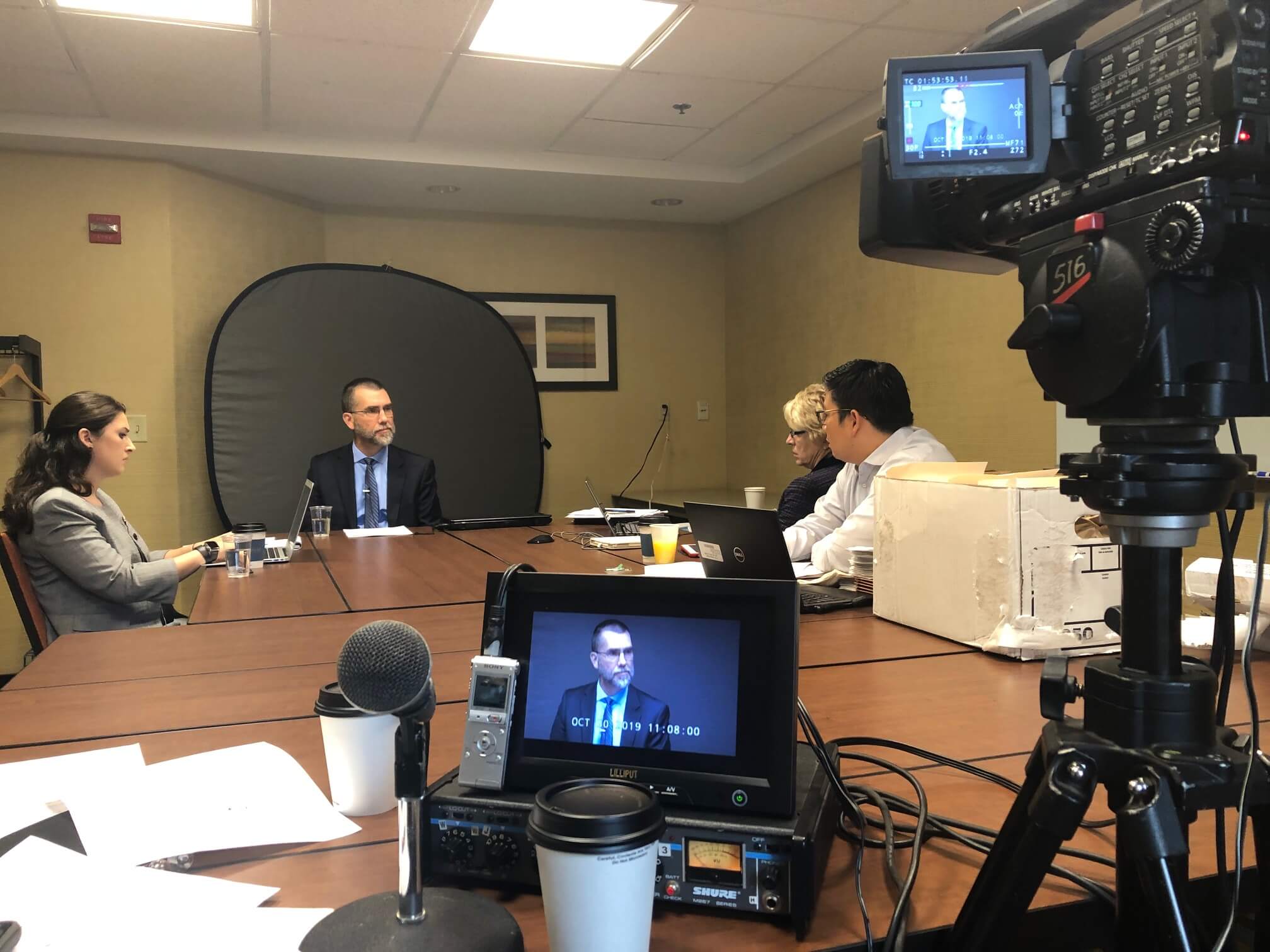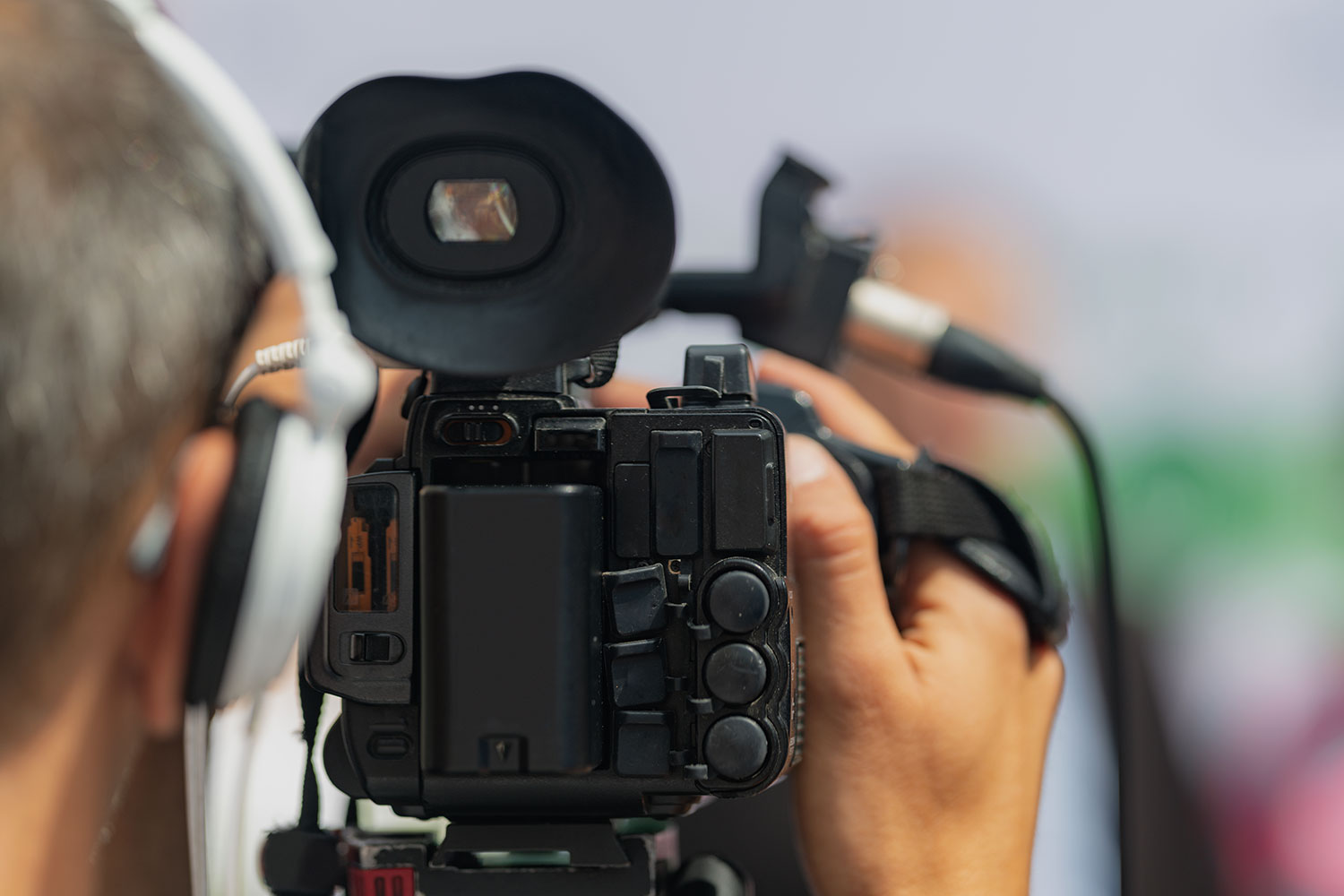The Ultimate Guide to Legal Videography for Lawyer and Legal Teams
The Ultimate Guide to Legal Videography for Lawyer and Legal Teams
Blog Article
Diving Into the Mechanisms of Legal Videography: Unveiling Its Operation in Safeguarding Authentic Visual Testimony for Judicial Procedures
In the world of judicial procedures, the function of legal videography stands as a cornerstone in protecting and offering aesthetic evidence. As innovation continues to breakthrough, the devices behind lawful videography have actually become increasingly intricate, offering an essential layer of authenticity to testaments recorded on video. By diving right into the operational intricacies of lawful videography, one can reveal the careful processes that safeguard the honesty of aesthetic evidence offered in courts - Legal Videography. This exploration not only clarifies the historic evolution of lawful videography however also means the future patterns that may further reinvent just how aesthetic testimonies are promoted in the realm of justice.
Historical Advancement of Legal Videography
Taking a look at the historic development of legal videography discloses a considerable change in the recording and presentation of visual proof within the lawful landscape. In the past, legal proceedings greatly depended on composed records and photographs to document events and supply proof. However, with the development of video clip technology, the legal industry saw a standard change in exactly how aesthetic testament was recorded and offered.
The advancement of lawful videography can be mapped back to the late 20th century when advancements in video recording equipment made it more available for use in courtrooms. This technological innovation not just enhanced the precision and dependability of visual proof yet additionally revolutionized the way cases existed to courts and courts (Legal Videography). Lawyers started to identify the persuasive power of video recordings in sharing emotions, nuances, and non-verbal cues that composed pictures or transcripts alone might not record successfully

Technology Improvements in Video Documents
What vital technological advancements have changed video clip paperwork in the legal field? The lawful field has actually seen significant innovations in video paperwork technology that have actually enhanced the authenticity and reliability of aesthetic evidence in judicial proceedings.
Furthermore, advancements in video file encryption and watermarking modern technologies have boosted the protection and tamper-proof nature of video evidence, guarding it against unauthorized changes or tampering. Additionally, the arrival of cloud storage services and remote accessibility capabilities has streamlined the storage, access, and sharing of video clip proof, facilitating seamless cooperation amongst lawyers and making certain efficient access to essential visual statements when required. These technological developments in video documentation have definitely changed the lawful area, improving the accuracy, integrity, and admissibility of aesthetic evidence in judicial proceedings.
Role of Lawful Videographers in Court Room Setups
The evolution of video clip paperwork modern technology in the legal area has demanded a crucial duty for legal videographers in court setups, making certain the stability and reliability of aesthetic testimonies presented during judicial process. Legal videographers play a fundamental function in capturing and protecting precise aesthetic evidence that can be critical in lawsuit. Their obligation includes establishing tools, recording process, and producing premium video clips that properly reflect the occasions in the court.
In court setups, lawful videographers must adhere to rigorous guidelines and standards to keep the authenticity of the aesthetic document. They should possess an eager eye for detail and a complete understanding of legal procedures to make sure that read more the video they record is a real representation of the occasions that took place. Furthermore, legal videographers commonly function carefully with lawful groups to guarantee that the video clip proof straightens with the case's demands and can be efficiently provided in you could try these out court to sustain the lawful disagreements being made. Overall, the duty of legal videographers in court room settings is essential in supporting the concepts of justice and making certain the transparency of lawful procedures.

Ensuring Admissibility and Honesty of Video Proof
To preserve the integrity of visual proof offered in lawful proceedings, making sure the admissibility and honesty of video clip evidence is an essential duty for legal videographers. Admissibility describes the acceptance of evidence by the court, and for video clip evidence to be permissible, it should meet particular requirements. Legal videographers play a critical function in making certain that the video clips they capture abide with the policies of proof, such as importance, reliability, and credibility.
Integrity of video evidence involves maintaining the creativity and precision of the video from the time it is recorded until it exists in court. This consists of safely saving the video clip files, documenting the chain of protection, and preventing any tampering or changes. Lawful videographers must comply with strict methods to assure the integrity of the video clip evidence and protect against any type of difficulties to its credibility.
Future Trends in Legal Videography
Given the enhancing reliance on technology in lawful proceedings, legal videographers are poised to embrace cutting-edge advancements shaping the future of visual statement capture and discussion. One of the prominent fads imminent is the combination of virtual truth (VR) and increased fact (AR) you can try here technologies into lawful videography. These technologies have the potential to reinvent just how visual proof exists in court rooms, enabling discretionary to submerse themselves in the scene of the crime or event.
Moreover, the use of artificial knowledge (AI) algorithms for video evaluation is expected to simplify the procedure of assessing and analyzing big amounts of video clip footage. AI can help in determining essential minutes, abnormalities, and patterns within videos, boosting the performance of lawful examinations.

Verdict
To conclude, legal videography has played an important function in supplying authentic aesthetic proof for judicial procedures. Via technical developments and the proficiency of lawful videographers, the stability and admissibility of video clip evidence are made certain in court room setups. As lawful videography continues to evolve, it will certainly be important to support requirements that preserve the accuracy and integrity of visual testament for the future of legal proceedings.
Taking a look at the historical progression of legal videography reveals a considerable change in the capturing and discussion of aesthetic proof within the lawful landscape.The evolution of video paperwork technology in the legal area has actually demanded a critical function for legal videographers in courtroom setups, making sure the honesty and dependability of visual statements offered during judicial proceedings. Furthermore, legal videographers usually work very closely with legal teams to make sure that the video evidence aligns with the case's requirements and can be successfully provided in court to sustain the lawful disagreements being made.To preserve the trustworthiness of visual proof presented in legal procedures, guaranteeing the admissibility and stability of video proof is a critical responsibility for legal videographers. As legal videography continues to progress, it will be important to promote standards that keep the accuracy and dependability of visual statement for the future of lawful process.
Report this page